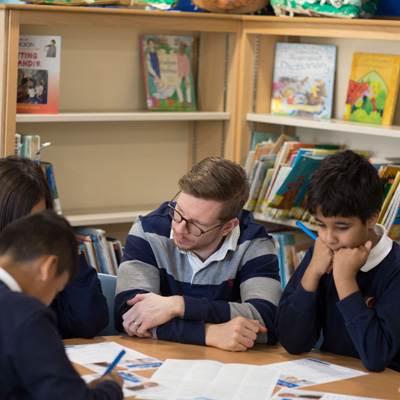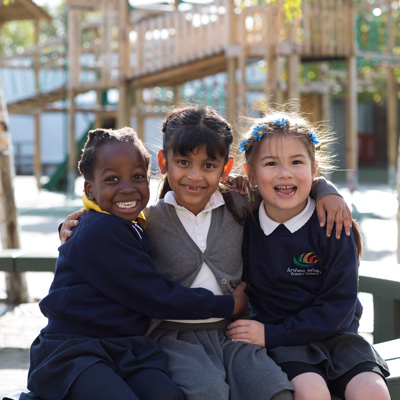At this Gold primary school teachers believe children’s rights should be woven into all areas of the curriculum, including literacy, to help every child become the best that they can be.
Amy Stoba, Reception Teacher and Early Years Foundational Stage (EYFS) Lead discusses how linking reading to rights helps children connect within a diverse community.
Books as the starting point for discussion about diversity and rights
As we are a very diverse school with many different religions and backgrounds, we use books to serve as a wonderful conversation starter for children to speak about their faith, their culture and how they celebrate with their families. We often have brilliant discussions about the ways in which we are similar and the ways we might be different but always ensure we talk about each other with kindness and respect.
We have recently begun using the ‘Think Equal’ books in our Reception classrooms and they have been such an excellent resource to help our children learn about and understand their rights. They cover topics such as friendship, forgiveness, different cultures, respecting each other, looking after our planet and they also help to teach children that their voice matters and that what they say is important.
The books are lovely to look at with engaging illustrations and they are pitched at an appropriate level; allowing all the children to access them. Staff make specific links to children’s rights where possible and the children are becoming more confident at expressing their thoughts and feelings during these sessions. We also use a variety of non-fiction books to support our learning, particularly when teaching about religious celebrations and different cultures.
Books reflecting and linking into the school community
As a school, we ensure that our books reflect our children and families, and this runs from Nursery through to Year 6. In Reception, we have a variety of books that cover topics such as children with disabilities (Article 23) children from different types of families and also information books (Article 17) about different countries, cultures and religions (Articles 14 & 31). These books are linked to our curriculum where possible and are also read to the children throughout the year at story time.
As a school, we pay regular visits throughout the year to our local library. The library has a wonderful selection of books with brilliant representation and the children love being able to pick a new book that interests or resonates with themselves. Books will often spark important discussions and staff will act on these where possible. For example, after reading a book about plastic in the ocean, our Nursery and Reception classes decided to do a litter pick around our local area, we asked parents to join us and we filled lots bags of rubbish!
Improving links between reading and rights
If you want to improve links between reading and rights in your school I would start by doing an audit of books to check they are diverse and representative of the children in your school. They need to have pictures of children from different backgrounds, talk about different types of families and be set in different countries; this will help the children relate to the books and support them to understand their rights.
Think Equal is a good starting point for EYFS; the books are lovely, and the lesson plans are really useful. The circle times that come alongside the books have sparked some invaluable conversations and children are becoming much more confident at expressing their views and opinions and are deepening their understanding their rights.
School context: St Mary’s is a two form intake primary school in central Manchester, Moss Side.







